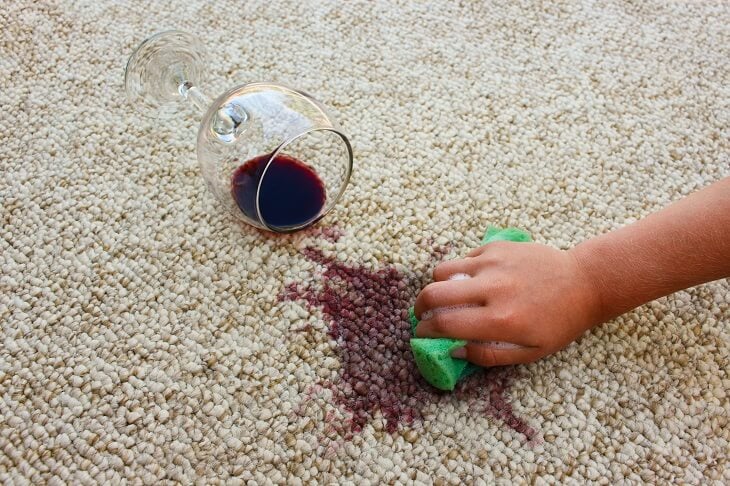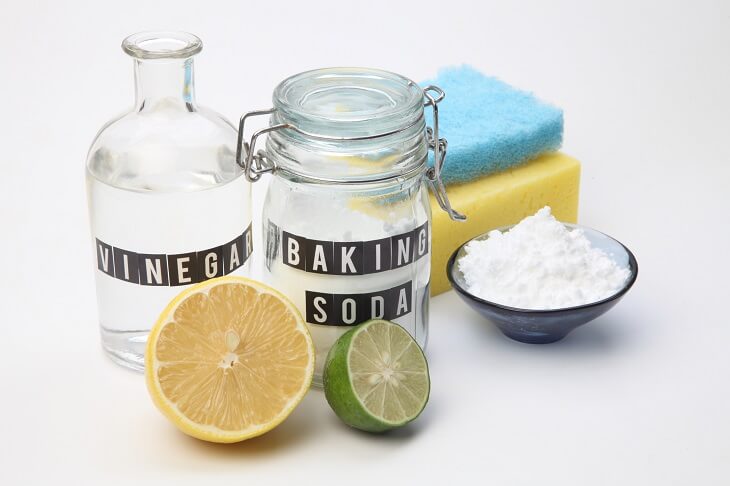You’ve finally got your lounge looking lovely – now the challenge is to keep it that way.
But homes aren’t just for show, they’re for living in, which means spillages and scuffs will happen. After all, what’s the point of spending so long hunting down your dream sofa, if you can’t drape yourself over it with a smooth glass of red after a busy week? And why bother indulging in that extra fluffy rug if you’re not going to sit on it for weekend movie marathons?
Luckily, there are things you can do to help tackle stains, marks and general dirt build-up. Add these expert tips to your list of spills and stain solutions.
Read: Six ways to spruce up an old sofa
Rule number one: act fast
Ideally, you don’t want to leave spillages to soak in – taking quick action is usually the best bet. “Over a sofa’s lifetime, we know that however hard we try, accidents happen and spillages can occur. Quick action can help minimise the risk of permanent stains. As soon as a spill occurs, take a kitchen roll or a clean towel to soak up as much of the excess spill as possible, and then consult your manufacturer’s care guide to treat the rest of the spillage,” advises carpet specialist Simon Nicholson.

Remember: blot, don’t rub
Rubbing a spillage is never a good idea – you could end up spreading the stain. The aim is to absorb the excess liquid, so remember you only ever blot a stain or spillage. Rubbing will only cause the stain to become further embedded in the fabric. Use a clean, dry cloth and always ensure that it’s colour fast. Cotton is best, but if in doubt, paper towel will do the trick.
Raid the kitchen cupboards

For a carpet or rug red wine or coffee spillage you’re tackling yourself, some quick action with a homemade remedy might be useful. We’ve all heard about chucking white wine on top of a red wine spillage but we’re not sure how effective this really is. Many people swear by using baking soda, or a baking soda paste: mix three-parts baking soda with one-part water. Apply to the affected area and leave to dry and ‘suck’ up the offending spillage, then vacuum it up – hopefully lifting the stain in the process. Another method is to mix a tablespoon of liquid dishwashing detergent with a tablespoon of white vinegar and two cups of warm water. Then apply this to a clean cloth and repeatedly blot the stain, alternating with a separate dry cloth, until the stain lifts.
Read: Carpet cleaning – hire a pro or DIY?
Know when to call in the professionals
Everyday stains and spillages are fine to deal with yourself. Liquids such as cordials and hot drinks can usually be removed with a little gentle persuasion. Things such as red wine and orange juice are better handled by the professionals once you have tried the ‘blot, don’t rub’ approach.
A professional upholstery cleaning service or an upholstery specialist may be able to offer a specialist cleaning kit for stubborn stains. But only use if the manufacturer’s care guide recommends it. This is especially important with fabrics that are delicate or require special care and cleaning methods.
However tempted you may be, never machine wash sofa covers, even if they appear to be removable.
Be careful about the products you use
This might sound like a no-brainer, but make sure you check that any cleaning products you’re going to try are suitable for the spot. If in doubt, call the manufacturer’s customer helpline, or pop into a specialist store to ask for advice.
The same applies when using substances that might seem completely harmless, such as water. “Many people think using water to clean their carpets will mean fresh, bright floors, but over time, the repeated wet cleaning can wash out wool’s natural waterproofing, resulting in the carpet acquiring a hard, crusty feel,” says cleaning expert Peter Hollier. “Water can also cause the carpet fibres to shrink and stretch and the dye to bleed, leaving a less-than-luxurious finish. So, if you are going to clean your carpets with water, it’s important you don’t use too much and you dry the carpet quickly.”
Read: How to clean a leather lounge or sofa without stress
Factor in some thorough deep cleans
To really keep carpets and rugs looking their best, the experts advise routine deep cleans twice a year, or when required.
“Carpets collect a lot of dirt and dust over time, from children running in with their shoes on after they’ve been to the park, pets rolling on the floor, and not forgetting the countless times food or drink has been spilt. Regularly vacuuming your carpets will result in the top layer of dust and grime being sucked out, however, you are leaving behind worn in dirt and allergens that only a good deep-clean can remove,” says Mr Hollier. “So, in addition to regular vacuuming, your carpets and rugs need a deep-clean to remove stubborn dirt that’s become embedded in the fibres. We believe dry-cleaning is the best solution, with a powder-based cleaning agent that you sprinkle on the carpet, massage in and then vacuum away. It might take a little longer than other cleaning methods, but it will ensure you achieve the desired results without damaging your carpet in the process.”
You can often run the vacuum over your sofa too. A weekly wipe down with a slightly damp cotton cloth and a quick vacuum with the soft tip brush attachment will keep them looking as good as new.
What’s your go-to product when it comes to removing stains? How often do you deep clean your carpets? Let us know in the comments section below.
– With PA
If you enjoy our content, don’t keep it to yourself. Share our free eNews with your friends and encourage them to sign up.

